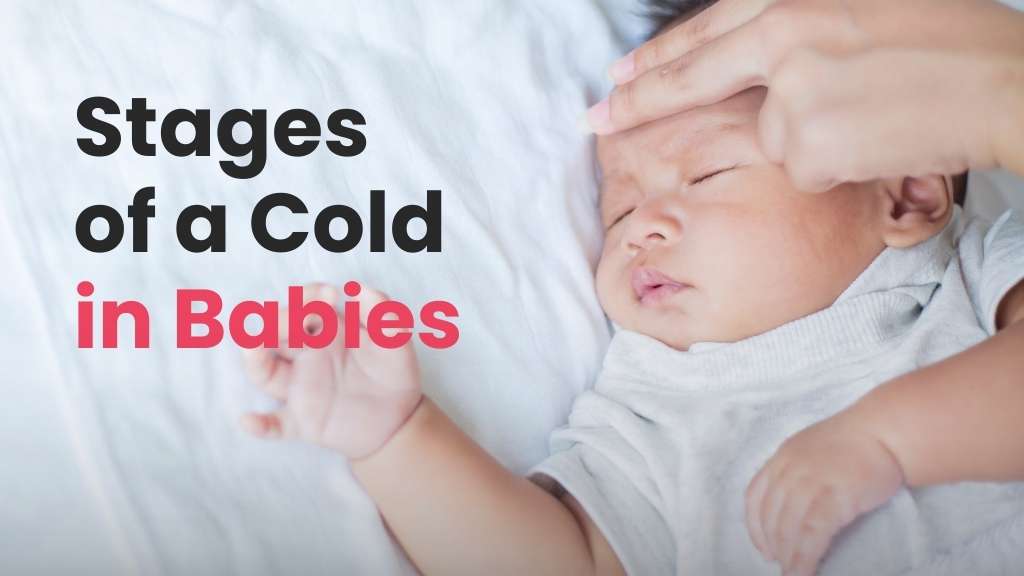
Table of Contents
As a parent, it’s natural to be concerned when your little one falls under the weather, especially when it comes to something as common as a cold. While colds are often harmless and part of growing up, it’s important to be aware of the symptoms and know how to provide the best care for your baby. Let’s explore the stages of a cold in babies and how you can navigate this common childhood ailment with care and confidence.
What is a Common Cold?
The common cold is a contagious upper respiratory infection that impacts the nose, throat, sinuses, and trachea. While often associated with coronaviruses, the common cold can be caused by over 200 various virus types, with the rhinovirus being the most prevalent. The term “common” accurately reflects its widespread occurrence, as individuals typically experience more colds than any other illness throughout their lives. Adults can expect to catch two to three colds annually, while young children may experience four or more instances per year.
The Stages of a Cold in Babies
Stage 1: Early (Days 1 to 3)
- Within one to three days after exposure to the cold virus, you might notice a tickle or soreness in your throat.
- Common early symptoms include sneezing, runny nose, nasal congestion, cough, and hoarseness.
Stage 2: Active (Days 4 to 7)
- Symptoms tend to worsen during this stage.
- In addition to the symptoms from the early stage, you might experience body aches, headaches, runny eyes, and increased fatigue.
- Fever, more common in children, might also occur.
Stage 3: Late (Days 8 to 10)
- Symptoms generally start to improve during this phase.
- Lingering symptoms might include a persistent cough that can last for several weeks after the infection.
- If symptoms worsen or fever returns, seeking medical attention is advisable, as complications like bronchitis, sinusitis, or pneumonia could develop.
Understanding the progression of common cold symptoms can help you manage the stages of a cold in babies and know when to seek medical care if necessary.
Recognizing the Symptoms
The stages of a cold in babies present themselves through a range of symptoms that can vary from child to child. Keep an eye out for:
- Runny Nose: Initially, the discharge might be clear, but it can turn thicker and change in color over time.
- Sneezing: Frequent sneezing is a common sign of a cold, as your baby’s body attempts to clear out irritants.
- Mild Fever: Temperatures between 101 to 102 degrees Fahrenheit (38.3 to 38.9 degrees Celsius) are typical with a cold.
- Appetite Changes: A reduced appetite is common due to congestion and discomfort.
- Drooling: Sore throats and difficulty swallowing can lead to increased drooling.
- Cough: A cough might develop as the cold progresses.
- Irritability: Discomfort and disrupted sleep might lead to increased fussiness.
- Slightly Swollen Glands: You might notice slight swelling in the neck area due to the body’s immune response.
Providing Comfort and Care
While the stages of a cold in babies can be distressing for both the child and the parents, there are several steps you can take to provide comfort and alleviate symptoms:
- Hydration: Ensure your baby stays well-hydrated with breast milk, formula, or water, depending on their age.
- Elevate the Head: Using a slightly elevated sleeping position can help with congestion.
- Saline Drops and Bulb Syringe: Saline drops followed by gentle suction using a bulb syringe can help clear a stuffy nose.
- Humidifier: A cool mist humidifier in the baby’s room can help ease congestion.
- Extra Love and Attention: Holding, cuddling, and providing extra comfort can go a long way in soothing your baby’s discomfort.
- Consult a Pediatrician: If symptoms worsen or you’re concerned about your baby’s health, don’t hesitate to seek professional advice.
When to Seek Medical Attention
While most stages of cold in babies are self-limiting and resolve within a week or two, it’s important to be vigilant. Seek medical attention if your baby:
- Is younger than three months and has a fever.
- Is having difficulty breathing.
- Is showing signs of dehydration, such as fewer wet diapers.
- Develops an earache or has discharge from the ears.
- Has a persistent high fever.
Remember, every baby is unique, and their response to cold can vary. Always trust your instincts and consult a healthcare professional if you’re uncertain about your baby’s health. Your care and attention play a vital role in your baby’s well-being and recovery.
Final Thoughts :
In the baby’s battle against the common cold, understanding the stages becomes a vital tool for parents and caregivers. Throughout this journey, it’s essential to provide gentle care, ensure hydration, and seek medical guidance if needed. By recognizing the stages, we equip ourselves to provide the best support, fostering our little ones’ well-being and reassuring them with the love and care they need to overcome the challenges of the common cold.










